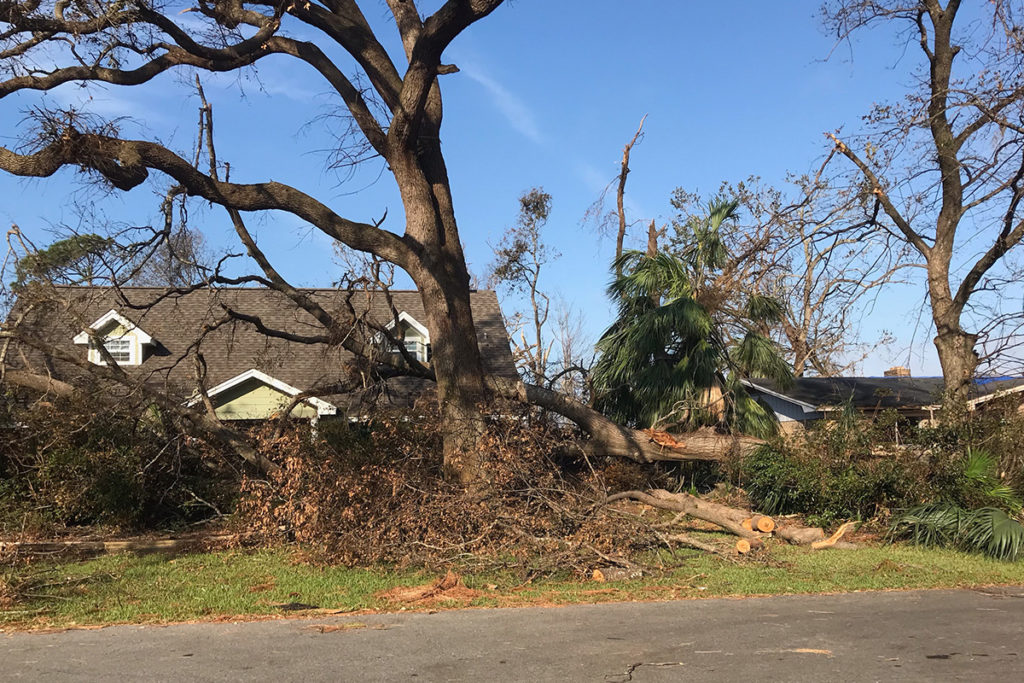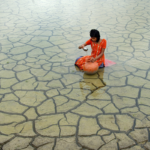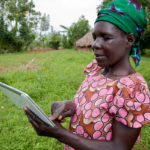Two months ago, the western wall of Hurricane Michael decimated my hometown in the Florida Panhandle – a sparsely populated, tree-filled, white sand beach section of the state. As the third most powerful hurricane to ever hit the United States, Michael’s damage is so extensive that final numbers on costs and recovery are not available yet. As I struggle to process the extent of the damage and the impact on my community, I also wonder what else we know about the costs to economies and communities in disaster areas – and if there is anything that applies to the Panhandle. I grew up learning about hurricanes, but never did my own research until now. I found three journal articles that can help me and I summarize them in this post.
Each article focuses on a different aspect of estimating, mitigating and understanding the economic cost of different disaster events: a hurricane’s potential economic growth impact in U.S. coastal counties, resilient infrastructure models applied to Vanuatu after Cyclone Pam, and an expanded definition of costs for the 2014 Ebola Outbreak in West Africa.
Estimating the potential economic impact of natural disasters
In the first article, “The economic growth impact of hurricanes: Evidence from U.S. coastal counties,” Eric Strobl (2011; gated) takes economic panel data from 1970–2005 for 409 coastal counties in 19 states and applies his newly created Hurricane Destruction Index (HURR) to estimate the economic impact of hurricanes on local counties using weights and a series of regressions. He finds that a county’s economic growth rate decreases 0.45% on average (with one standard deviation above the mean equaling a 0.93% decrease). After one year, Strobl finds the long-term economic impact is negligible at the county and state level.
The HURR is based on “a monetary loss equation, local wind speed estimates, and local exposure characteristics.” Strobl uses NOAA’s designation of a coastal county and economic data, including the publicly-available county-level estimates, from the Bureau of Economic Analysis. He determines wind fields through FEMA’s HAZUS.
In addition to his primary result, Strobl also looks behind the numbers to understand different trends. A few intriguing trends include: 28% of the estimated economic loss is rich people moving away, and local political influence at the state and national level mitigates the economic impact of hurricanes as does participation in the National Flood Insurance Program.
Strobl discusses a possible limitation to his study: a GDP estimate is based on where a person files taxes. Retirees or seasonal workers/residents can file taxes in other states, so their income does not register in a coastal county. This fact is relevant to a tourism/snowbird-based economy like many counties in the Panhandle.
In Florida, the saying goes, you are never more than an hour from the beach. Strobl’s study stands out to me because most of the Panhandle is a coastal county. In fact, 62 of Florida’s 67 counties meet the designation. I did the math and roughly 15% of Strobl’s data comes from Florida. I see his study as setting a baseline for my expectations about the scale of Hurricane Michael’s economic impact.
Tools to mitigate the cost of rebuilding after natural disasters
In 2015, Cyclone Pam hit Vanuatu as a category 5 storm, one of the worst recorded natural disasters in the region’s history. Vanuatu, an island nation in the South Pacific, ranks number one in risk of disaster on the World Risk Index.
In the models, Marto, et al., capture four elements of Vanuatu’s economy: firms, government, households, and aggregation and market clearing conditions. (You can see the specific equations in the article.) Then, the authors calibrate the models to Vanuatu as it was in 2015.
Marto, et al., find government investments in resilient infrastructure and fiscal buffers reduce the amount of aid needed post-disaster and reduce the overall cost of rebuilding. However, no matter the mitigation strategy, donors do have to help to avoid long-term debt instability. The authors are clear that these tools are not fully able to offset the economic impact of a natural disaster, but they could give small island nations a better starting point during post-disaster recovery.
The Florida Panhandle is not a small developing state and this article does not directly apply to understanding the economic impacts in the region. But that doesn’t mean the model and its results as applied to Vanuatu are wholly irrelevant to my questions. I include this article because I think it is important to understand what options are available to communities that support resilience.
The Marto, et al. study is possible because Cyclone Pam is well-documented, but the cost of every disaster in the world is not clear cut. The last article delves into an expanded definition of costs and provides insight into the complexity of defining economic impact.
A better understanding of true costs after disease outbreaks
In the third and final article, “The economic and social burden of the 2014 Ebola outbreak in West Africa,” Caroline Huber, et al. (2018) conduct a systematic grey literature review to determine the true economic and social burden of the outbreak that claimed more than 11,000 lives. Prior to this article, previous lost GDP estimates ranged from $2.8 to $32.6 billion.
Huber, et al., however, estimate the true economic and social burden at $53.19 billion (2014 USD) – $18.8 billion alone resulting from deaths from non-Ebola causes. The authors come to a different figure by identifying six areas they believe are missing from traditional cost estimates: social factors; impact on the health care workers; costs of non-Ebola diseases; costs of long-term Ebola sequelae (aftereffects); costs of treatment, infection control and screening outside West Africa; and costs of deployment of human resources outside of West Africa.
This article interested me because it makes costs more personal. Yes, it complicates counting, but Huber, et al. present more numbers, more facts, and highlight that the final cost of a disaster is not just about the direct economic costs like lost income or the price of rebuilding. Cost includes the value of the lives lost, the long-term social impacts of living in a disaster area, the lack of resources for other important matters such as non-disaster related health issues and non-disaster related deaths. I am watching my community grapple with these concepts now and, in my opinion, this article gets at true costs versus perceived cost.
Conclusion
I turned to the scientific literature because I needed to turn my anxiety into something productive. Even though my motivation is personal, these articles gave me information worth sharing about economic cost estimates, available mitigation tools, and the social costs of disasters. Disaster research is important and relevant for many economies and communities. It turns out we do know a lot about the costs of natural disasters and disease outbreaks.
Photo caption: Whitton family home, Florida
Photo credit: Katherine Whitton



